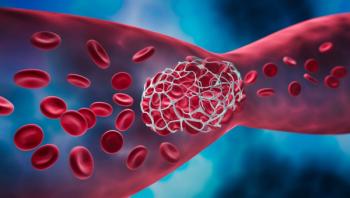
Case Study Uncovers Potential Autoimmune Link Between Hemophilia A and Primary Biliary Cholangitis
In a rare case study not previously reported, researchers found a possible link between acquired hemophilia A, a life-threatening bleeding disorder caused by autoantibodies, and primary biliary cholangitis, a chronic autoimmune disease that damages the liver’s small bile ducts, suggesting shared immune system triggers and highlighting the need for quick, targeted treatment.
The case study, published in Future Science OA,
The study, which reports on a 48-year-old man, is believed to be the first documented case linking these two conditions, according to the authors.
Researchers suggested that shared autoimmune pathways may explain the connection and emphasized the need for prompt diagnosis and treatment when these diseases occur together.
Acquired HA is a rare but potentially life-threatening condition caused by autoantibodies that attack clotting Factor VIII.
Unlike inherited hemophilia, acquired HA typically appears in people with no personal or family history of bleeding and is often triggered by other conditions such as cancer, certain medications or autoimmune diseases.
These autoantibodies interfere with normal blood clotting, leading to spontaneous or prolonged bleeding episodes. In many cases, the underlying cause remains unknown.
Primary biliary cholangitis, or PBC, is also a rare disease.
It occurs when the immune system mistakenly attacks the small bile ducts in the liver, leading to chronic inflammation, bile buildup, and eventually liver damage.
The disease mostly affects middle-aged women, but in this case, it appeared in a man with no prior liver disease symptoms.
According to the Cleveland Clinic, it primarily affects
In the U.S., it affects around 60 females per 100,000 and 15 males per 100,000.
PBC is more common in Scotland, Scandinavia and Northeast England. It’s also more common in people with a personal or family history of autoimmune disease, suggesting it might be a partly genetic disorder.
PBC is diagnosed through a combination of blood tests, imaging, and the presence of specific autoantibodies—particularly anti-mitochondrial antibodies (AMA).
According to the study, the patient was admitted to the hospital with uncontrolled oral bleeding following a routine tooth extraction.
He had no history of bleeding disorders or recent medication use. Tests revealed a dangerously low level of hemoglobin and a prolonged activated partial thromboplastin time (aPTT), a key marker of clotting dysfunction.
Further testing confirmed the presence of Factor VIII inhibitors, leading to a diagnosis of AHA.
Additional lab results, including elevated liver enzymes and positive AMA-II antibodies, along with imaging showing liver damage, supported a diagnosis of PBC.
Treatment for AHA began with clotting factor replacement, but the bleeding did not stop until the patient received recombinant activated Factor VII, which successfully controlled the hemorrhage.
He was also started on immunosuppressive therapy to stop the body from producing the harmful antibodies.
For the management of PBC, he was prescribed ursodeoxycholic acid, a standard treatment also known as ursodiol that helps improve liver function and slow disease progression.
This case illustrates the importance of recognizing rare autoimmune overlaps and highlights how swift, combined care from both hematology and gastroenterology teams can lead to successful outcomes—even in unusual and severe presentations.
This case study's strength lies in reporting the first known link between acquired HA and PBC, providing a new perspective on autoimmune disease connections.
The authors offer a strong discussion of shared immune pathways and treatment success.
However, the study’s limitations are present in its single-patient design, lack of genetic testing and no long-term follow-up.
Also, no direct molecular link was found between the two diseases.
Authors suggest more research to confirm whether shared immune or genetic traits are behind this rare association.
They also recommend clinicians consider autoimmune liver disease in unexplained acquired HA cases and call for better collaboration across specialties.
Newsletter
Get the latest industry news, event updates, and more from Managed healthcare Executive.

















































